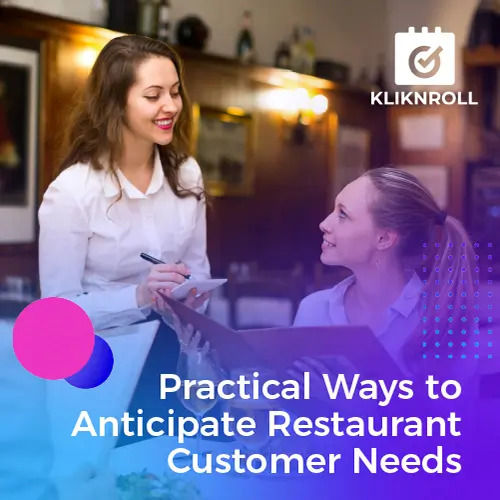Table of Contents
What Does Customer Needs Anticipation in a Restaurant Exactly Mean?
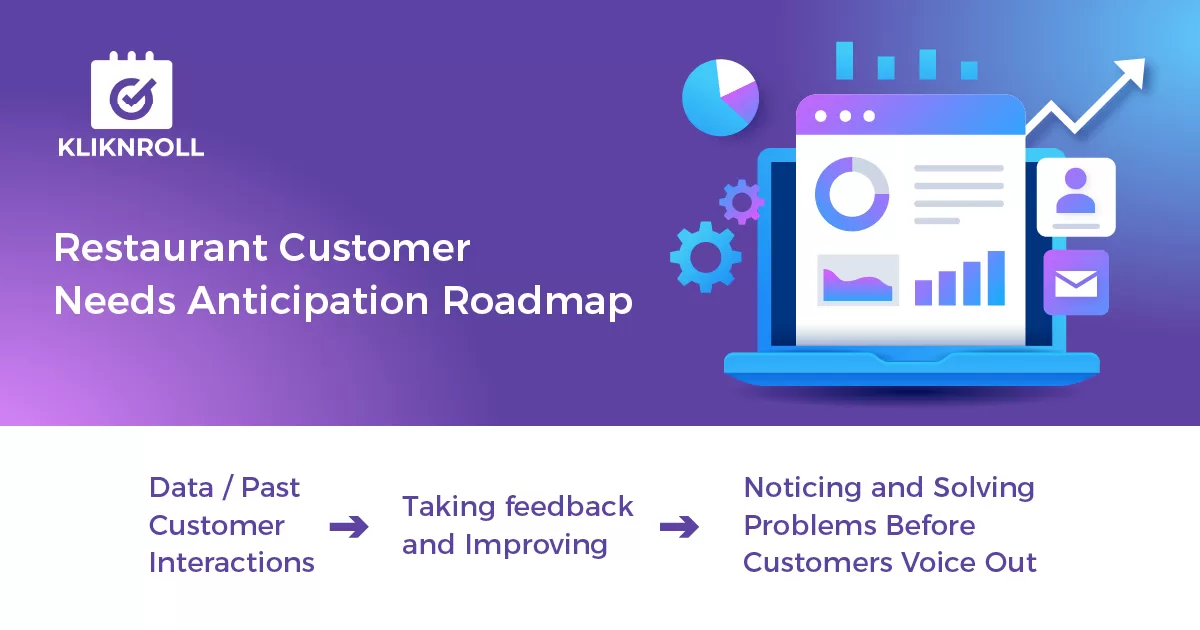
In this context, restaurant customer needs anticipation means being proactive and solving a customer’s problem without them asking for it.
Sometimes, they might not even notice that there is a problem but will appreciate it if even a minor inconvenience is taken care of for them.
Here’s an example, if there are older customers who might have problems reading the menu, it’s a good thing if you have a menu with a bigger font for better readability. This solves their problem even if they didn’t expect or realize it.
On a bigger scale, anticipating customer needs could mean setting up a robust system that collects data from various parts of the customer journey and past interactions to predict and cater to your customer’s needs before they’re expressed.
It’s not just customer needs that require anticipation, customer anticipation can also revolve around restaurant operations.
Adjusting inventory and staff allocation during certain periods also counts as customer needs anticipation, as you’re using data and dining habits to meet customer expectations before they even walk through the door!
Actionable Ways to Anticipate Customer Needs in Your Restaurant
1. Start by Identifying Customer Expectations & Customers Behavior
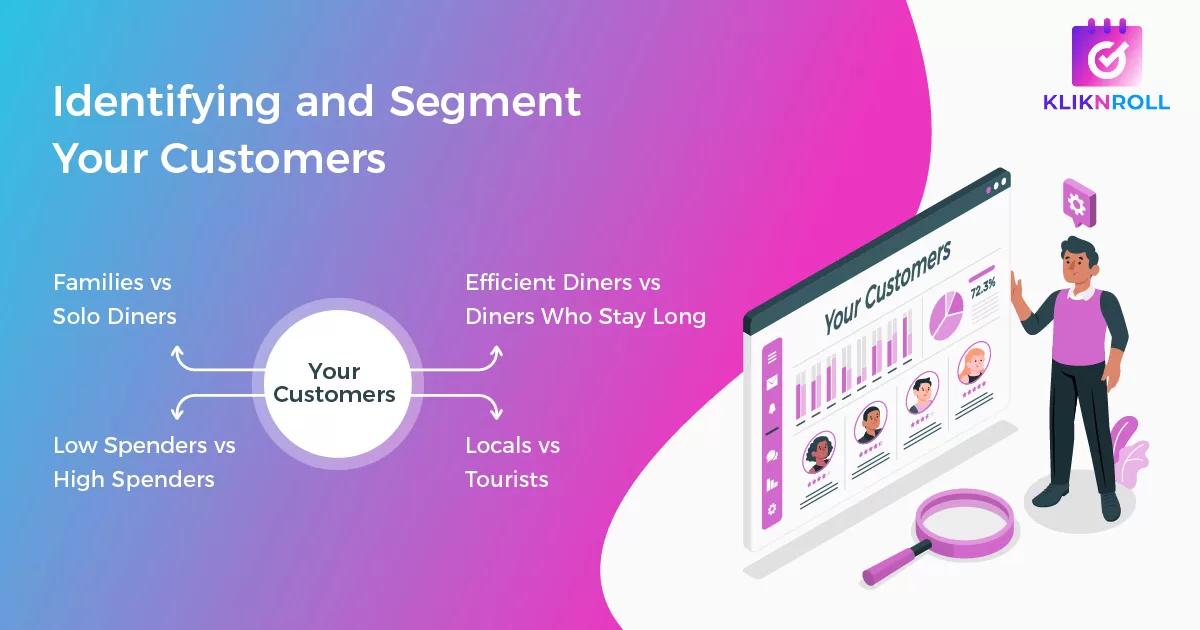
Identifying and understanding customer expectations revolves around recurring patterns in customer behavior and their expectations.
You can start by segmenting your customers based on age, preferences, etc. After doing that, you’ll have different customer personas that can give you insights into what a particular group’s preferences are.
For example, Gen Zs (those who were born between 1997 to 2012) are more health conscious compared to other age groups, according to Texas Health Org.
Age is just one way to segment your customers, for a restaurant, you can do further by grouping them via:
- Families vs Couples vs Solo Diners
- Locals vs Tourists
- Low vs High Spenders
- Efficient Diners vs Diners Who Stay Long
This is just the first step in trying to predict and anticipate customer needs and solve them before they even walk in.
After segmenting your customers, you’ll have an idea as to how certain segments will act and what their needs are.
For example, tourists will usually need more help in terms of information about local cuisine; whereas families might need help with allergens or spice level for their children.
2. Use Data & Online Reviews to Your Advantage
The next step in the process is to use data and online reviews to your advantage.
Online reviews, social media, and even the simple customer feedback form can help you understand your most and least popular dishes and why they do or don’t resonate with your customers.
As we’ve mentioned before, identifying patterns and trends is the cornerstone of anticipating your customers’ needs, and what better way to do that than hearing feedback directly from customers?
It’s not just about reading individual reviews but finding trends in both positive and negative reviews so that you know what you’re good at and what you’re not. This holistic view enables you to adjust SOPs or make changes to your menu using actionable data.
If you’re interested in learning more about collecting and using data, you can check out our guide on measuring and improving customer satisfaction.
3. Try Out a CRM System and Look at the Guest Experience
Implementing a Customer Relationship Management (CRM) system in your restaurant allows you to capture and understand guest preferences in much clearer detail.
A CRM system is essentially a platform for viewing and managing your customers and their relationship to your business. A good CRM allows you to spot trends, sift through data, and anticipate needs based on these patterns and trends.
For instance, that a particular group tends to prefer specific dishes during certain seasons, or that a regular customer celebrates milestones at your restaurant.
This allows you to take actionable and proactive measures to anticipate their needs like prepping ingredients or offering a more tailored experience through special promotions, etc.
Moreover, a CRM system isn’t just about understanding current needs; it’s a tool for future-proofing services. It allows for the prediction of upcoming trends, enabling strategic planning from your end.
For example, by identifying the evolving dietary preferences of a certain customer segment or popular menu item changes, you can adapt your offering in advance, ensuring it stays ahead in meeting changing customer needs.
Implementing a robust Customer Relationship Management (CRM) system in your restaurant could be a game-changer for your restaurant.
This is why, we at KlikNRoll developed our own CRM platform that is suitable for businesses of every size!
We made sure that everything was user-friendly and that business owners could understand their data in one glance instead of having to decipher everything.
Clients using our CRM system include Haagen Dazs, Murray Hotels, Marco Polo Hotels, and more! If you’re interested, click on the button below to contact us, and we’ll take care of the rest for you!
4. Get Into a Proactive Mindset and Prioritize Customer Experience
Another great way to anticipate customer needs is to simply get into a proactive and attentive mindset to help customers out.
Treat everyone who walks in your restaurant doors as an important person eating at your home.
If you’re expecting guests at your home, you’d probably make sure everything is as perfect as it can be – that’s because you want your guests to have a good experience and a lasting good impression.
The best way involves fostering a culture that prioritizes pre-emptive service. It means training the team not just to react but to anticipate—a mindset where understanding and fulfilling needs are ingrained in the restaurant’s DNA.
This proactive stance shifts the focus from just meeting requirements to envisioning and delivering great experiences.
For restaurant owners, staff, or management, having a proactive mindset is also about being agile and attentive in responding to customer needs.
5. Have a Robust Feedback Loop & Continuously Improve
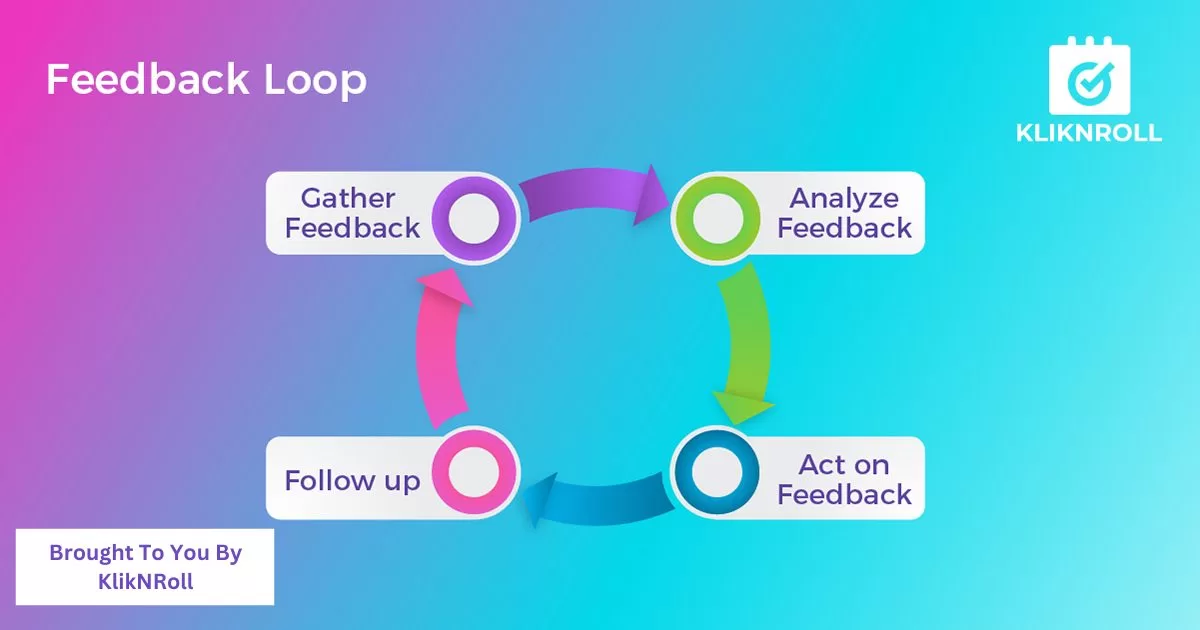
We’ve talked about segmenting customers and collecting data to predict what customers are looking for without them needing to ask for it. Now, it’s important to combine everything and create a robust feedback loop.
To simplify, a feedback loop is a continuous process in which the output of a system or operating procedure is used as input for further adjustments.
For a restaurant, it means collecting and analyzing data and feedback to then continuously improve.
This process is ongoing, creating a cycle of improvement where your restaurant gets better and better in all aspects of operations, like inventory management, customer service, speed of service, etc.
The goal is to be the best that you can be, making your restaurant the best version of itself, as well as minimizing customer complaints while being able to anticipate and solve customer pain points without them even asking for it or even realizing it.
6. Give Proper Training & Encourage Staff Decision-Making for Great Customer Service
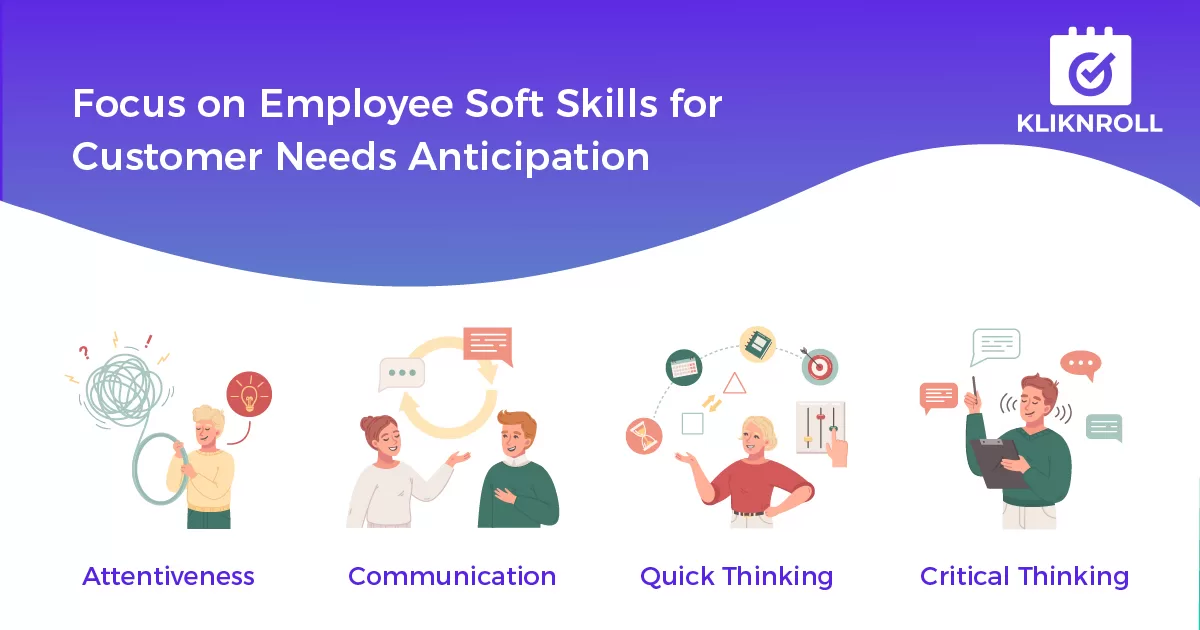
Now that you know the ways to anticipate customer needs, it’s time to train your staff to do the same. When we say ‘proper training’, it goes beyond just technical skills like POS system usage, menu training or even upselling.
You should ideally aim to cultivate a keen awareness of customer dynamics and for them to act quickly. In this aspect, soft skills like communication, attentiveness and quick thinking is paramount.
Other than training, the best thing you can do is to encourage critical thinking and give your staff the power to make their own decisions.
By allowing them to think on the fly, they can solve your customer’s problems without needing to get it approved.
This is part of the reasons why startups are so nimble and agile, as they can pivot and change with very little notice, unlike a big corporation where a single decision can take months because of the need to go through many layers of management.
Giving your staff this power not only removes dependency on you and upper management but can act as a motivator for them to feel like they’re making a difference.
Aside from that, clear communication between you and your staff is important. Despite empowering them to make their own decisions, make sure that there are limits to what they can or cannot do.
For example, they might have the power to give freebies but are unable to give discounts on the bills.
Why is Anticipating Customer Needs Important?
Anticipating customer needs is important for any restaurant or business because it’s one of the best ways to foster customer relationships and build lasting connections.
Customers appreciate it when you can sense what they want before they say it – things like these make a lasting impression and are the first step in building customer loyalty.
Loyal customers allow for reputation and brand building without you doing too much. Customers like these will post positive reviews and tell their friends and family about you (word-of-mouth), attracting new customers for you.
In an industry as competitive as the food and beverage industry, every edge matters in attracting more customers and bringing more revenue!
Remember, if you need help with any aspect of anticipating customer needs, especially if you’re in the market for a CRM, why not give a custom-made one like KlikNRoll a try? Click the button below to contact us!

Hey there! I’m Jeffrey Hau, and my journey in the digital world started after I wrapped up my psychology degree at UCLA. Imagine coming back to the bustling streets of Hong Kong from the tech haven of Silicon Valley – it was a whirlwind of inspiration! Seeing how social media platforms were evolving at breakneck speed and realizing the limitations of traditional advertising in this digital age, I decided to dive in.
In 2012, I laid the foundation of Prizm Group. From our humble beginnings, we’ve now blossomed into a global powerhouse with a team of over 200 passionate professionals. Our HQ is right here in Hong Kong, and we’ve spread our wings to SG, AU, NZ, JP, and China.
As a digital problem solver, our team found that several industries are in need of reservation systems, especially for F&B, Hotels, Beauty, and Medical sectors. Our digital magicians started crafting reservation systems tailored to cater to these specific needs. We extended our expertise to e-commerce, voucher management systems, and campaign management systems, combining them into KlikNRoll – an all-in-one solution. We deep dive into various industries, understanding their unique challenges and developing innovative solutions.
We’re not just a company; we’re your dedicated partners in transforming how you navigate the digital landscape. Our passion lies in providing businesses with intuitive and tailored solutions using KlikNRoll’s powerful capabilities.
Ready to embark on this exciting digital adventure with us? Let’s make your brand stand out in the digital jungle!



